Vermont may be the state most famous for maple syrup, but did you know that Pennsylvania isn’t too far behind in the rankings? We are the nation’s fifth largest maple syrup producer, with an average annual yield of 140,000 gallons per year (this figure does slightly fluctuate from year to year). With between 600 and 700 thousand taps across PA, maple is one more delicious agricultural crop that can be found locally!
One such PA producer is Sugar Mama’s Appalachian Maple, located in Tioga County, which was founded by Rachel Courtney in 2017. Courtney got her first taste of maple production as a teenager, and she has been hooked ever since. She is a wealth of maple knowledge, and is infectiously passionate about the local industry and community.
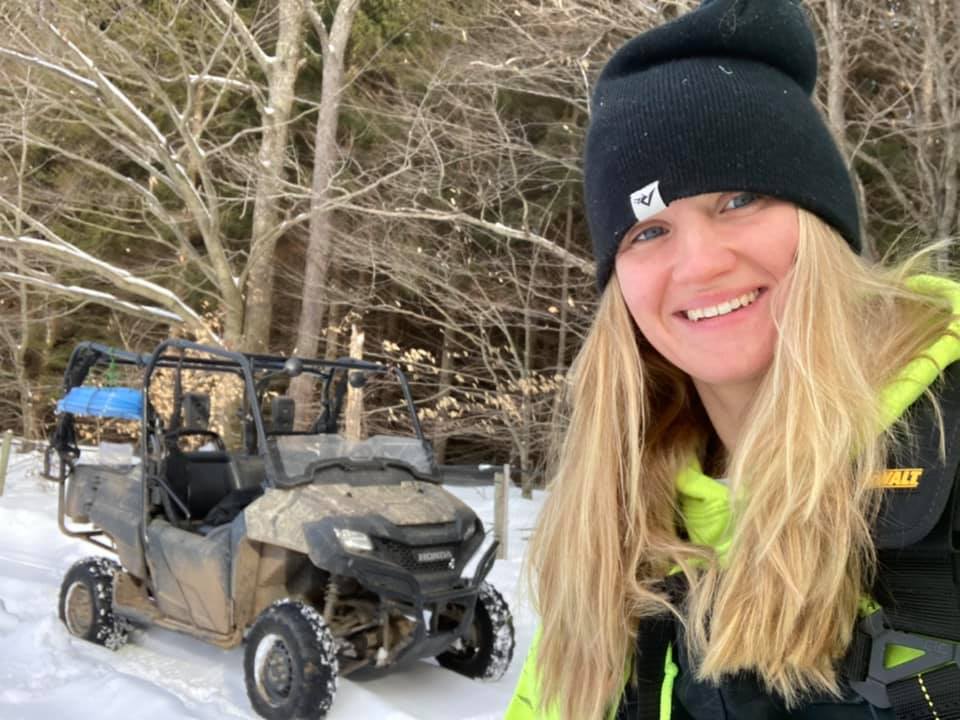
Rachel Courtney of Sugar Mama’s Appalachian Maple
From her family’s property in the Pennsylvania Wilds, Courtney produces beautiful Appalachian maple syrup, maple cream and maple candy, which are available for purchase online as well as at select local markets and retailers, like Bittner’s General Store in Trout Run, PA, and Night & Day Coffee Cafe and Courtney’s Garage in Mansfield, PA. We enjoyed the opportunity to learn more about Courtney’s journey, as well as tons of fun facts about local maple through this Q&A:
PA Eats: How did you first become introduced to the idea of tapping maple trees? Was this something your family did?
Rachel Courtney: I was raised on a 150-acre beef farm in Liberty, Pennsylvania, and I got the opportunity to grow up wild. We had horses, chickens, ducks, pigs, goats and sheep. We call it “The Funny Farm” because there’s a little of everything. My father, Robert Spencer Jr., started an HVAC business, Spencer Mechanical Inc., in Williamsport before he and my mother, Ruth, purchased the old Sindlinger farm in 1998. My dad did some backyard sugaring, tapping a few trees in the yard and boiling it down in a turkey cooker. It is nostalgic tradition for him. His grandfather, Theodore T. Spencer Sr., made syrup on the homestead in Roaring Branch. He used a bobsled and three barrels to collect the buckets of sap, and boiled it down on a 3-by-6-foot flat pan. They produced about 100 gallons every season. My dad can recall riding with him as a young boy through the frozen muck on the tractor, and watching the chains work to gain traction. The farm was an ambitious undertaking for my dad. Farming is demanding. Growing up I never really understood why someone would want to be so busy all the time with two jobs. I have always wondered if farming was something that ran in blood lines.
When did you first try your own hand at sugaring?
My dear friend and classmate, Mike Taylor, lost his father in September of 2005, during our sophomore year of high school. At the ripe age of 15, he took over his family’s dairy farm. He milked cows before he went to school in the morning and again when he got home from school. I was over there every spare moment I had to help. It wasn’t until then that I realized farming wasn’t a job at all. It is a way of life!
Mike’s great uncle, Bob Raker, owned and operated Raker’s Sugar Bush in Northern Lycoming County. The family has been producing syrup on the farm for over 175 years. I got my first lessons of hanging lines out in their sugar bush from the young Mike Taylor. Uncle Bob welcomed everyone into his sugar house and explained how the evaporator worked. He always had fresh popcorn and a Dixie cup of hot syrup to dip it in for us. Bob passed away in 2011, but his son, David Raker, still carries on the Raker’s Sugar Bush legacy. I will never forget Uncle Bob’s hospitality and willingness to teach the next generation about farming, maple and life, in general. So I guess it’s safe to say I caught “the syrup bug” when I was a young teen helping at Raker’s Sugar Bush.
Walk us through starting up Sugar Mama’s Appalachian Maple. Was it always clear that this would be your career path?
I graduated from Mansfield University in 2013, and worked as a graphic designer at a local paper. I now do freelance work from home, and advertising graphics for the largest maple publication, The Maple News, which is distributed throughout The Maple Belt. I love the artistic end of my job, but like I said, I grew up wild, and it’s hard to sit inside in front of a computer for hours. I prefer to be out and about outside.
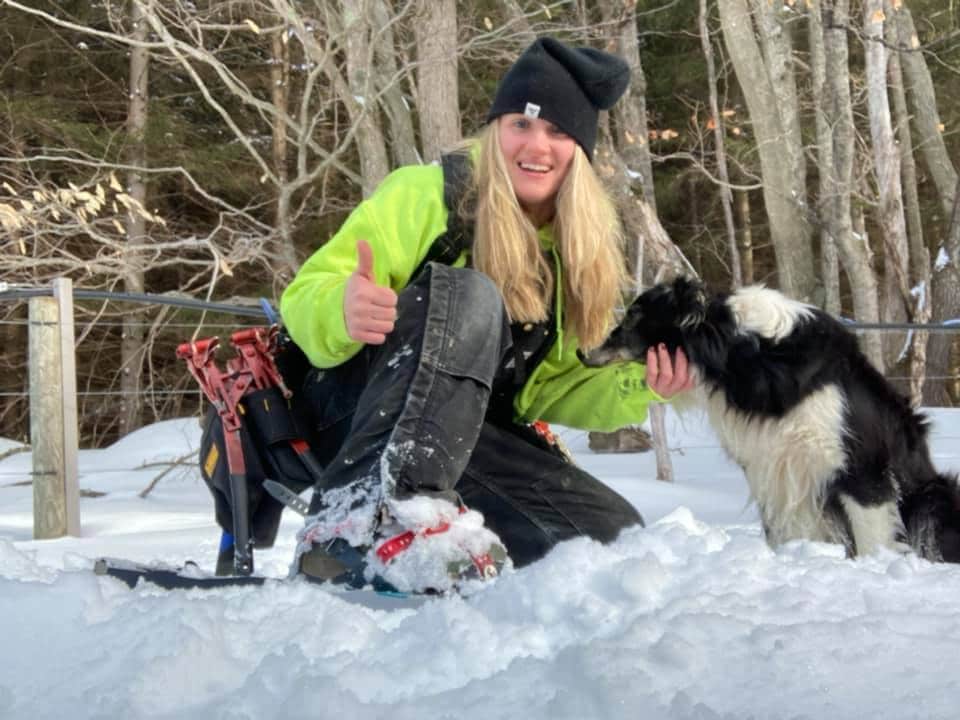
I now live in Mansfield with my husband, Hal Courtney and our daughter, Ruthann, on Hal’s family’s dairy farm. His father, Harold, milks about 75 Registered Holsteins. Hal owns and operates Courtney’s Garage, does all the equipment maintenance for the farm, and we help with the farm’s field work. Hal and I have a small, but growing, herd of Angus.
A few years ago, I tapped a couple of trees in our front yard for fun. Since my dad did the same thing at his place, we decided to join forces the following year. We hung buckets for collection and processed in turkey cookers on the weekends. We decided we needed a faster boiling method, so we converted an old wood stove my dad had built years ago into an arch and welded a stainless pan to cook faster. The homemade evaporator was set up in an old shop where my husband’s grandfather used to work on his tractors. We also started tapping about 50 maples in the sugar bush on the hill. Knowing how much potential there was to expand, I decided to take the plunge and started penciling out the design of my official shack. But it needed a name! It’s been an ongoing joke between my husband and me that he always wanted to marry a “sugar mama.” I’m all about making dreams come true, so Sugar Mama’s it is!
Tell us about your sugar shack!
In 2017, with the help of my father, husband and other family, we began construction on a 20-by-30-foot sugar shack. We were able to utilize the completed building in the 2019 season. We are now equipped with a 3.5-by-8 evaporator and a 300-GPH Reverse Osmosis machine. I make all my maple confections in the sugar shack. We currently collect from about 1,200 taps on a tubing system, and plan to add additional taps for the 2022 season!
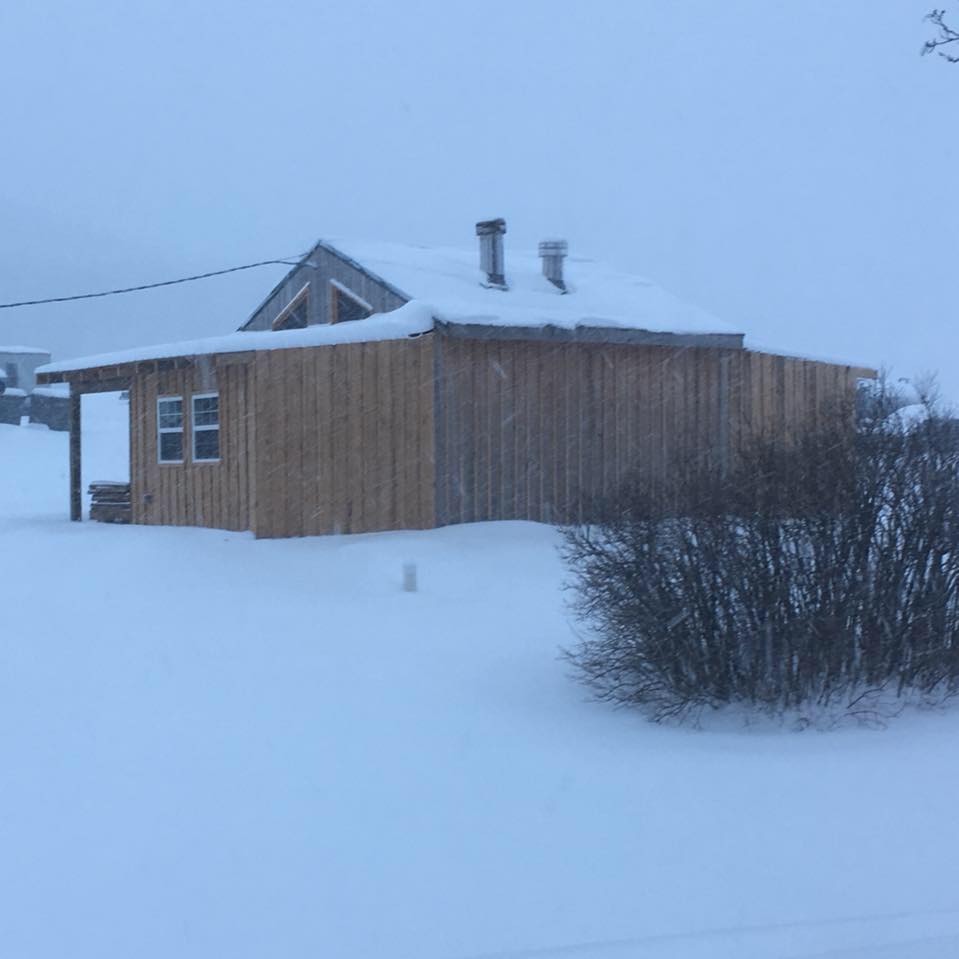
Can you explain a little bit more about the harvesting and production process for people who aren’t familiar with how maple syrup is made?
Maple sap runs in early spring, usually February and March depending on the weather, when nights get below freezing and days get above freezing. This freeze and thaw changes the internal pressure of the tree creating a natural vacuum, and allowing the sap to flow out the tap, through the spile and into a bucket, or collection tank.
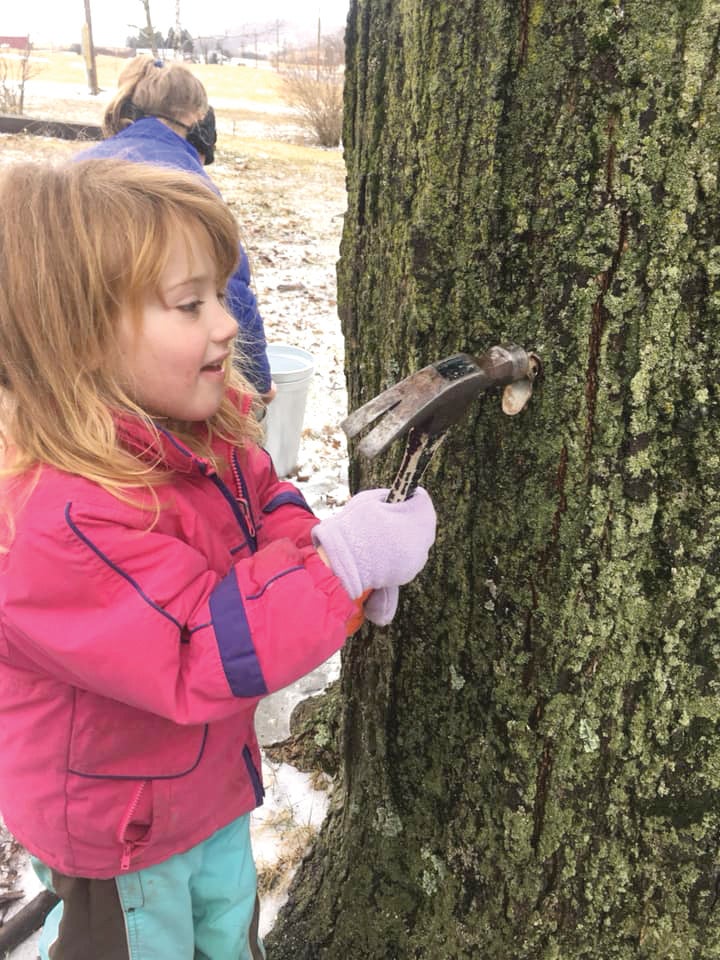
Rachel’s daughter, Ruthann, tapping a maple tree
Many maple producers were, and still are, dairy farmers. During the time of the year that maple runs, farmers have downtime from field work, and tapping into the sugar bush creates another income for the household. Dairy farmers use vacuum pumps to milk their cows and then pull it through the milk line to the bulk tank. We can thank them for applying this technology to tubing systems in the woods, which can boost the sap yield by 50 percent.
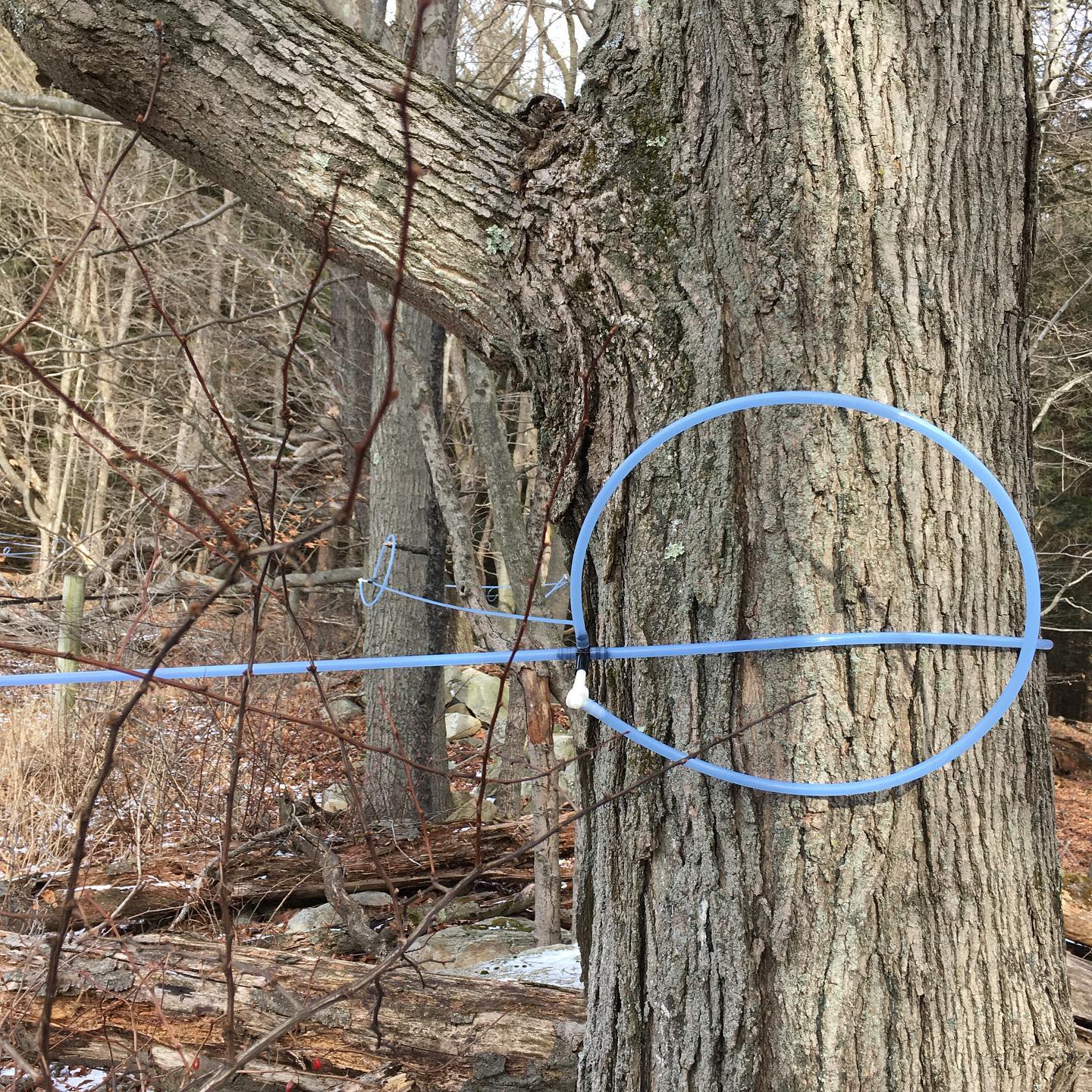
A healthy maple tree produces about 15 gallons of sap a season, which accounts for a very small percentage of the overall sap in the tree. Sap straight from the tree contains about 2 percent sugar, and it takes 40-50 gallons of sap at this percentage to make 1 gallon of syrup. So you need at least 3 trees in your backyard to create 1 gallon of syrup a season. Some of the largest producers have over 100,000 taps, that’s a lot of sap!
When the sap makes its way to the collection tank it must be processed quickly, as it will ferment. Reverse osmosis machines have made a tremendous difference in the amount of time we spend boiling. They alone can cut boiling time in over half. A reverse osmosis machine has a high-pressure pump that forces sap through a semi-permeable membrane. Water molecules are small enough to pass through the membrane and come out of the RO as “permeate,’ which is essentially pure water. The sugar molecules, minerals and biological organisms are too large to fit through the membrane and come out of the RO as “concentrate.” The concentrate now has a much higher sugar content, since water was removed, thus reducing boiling time, and the cost of production.
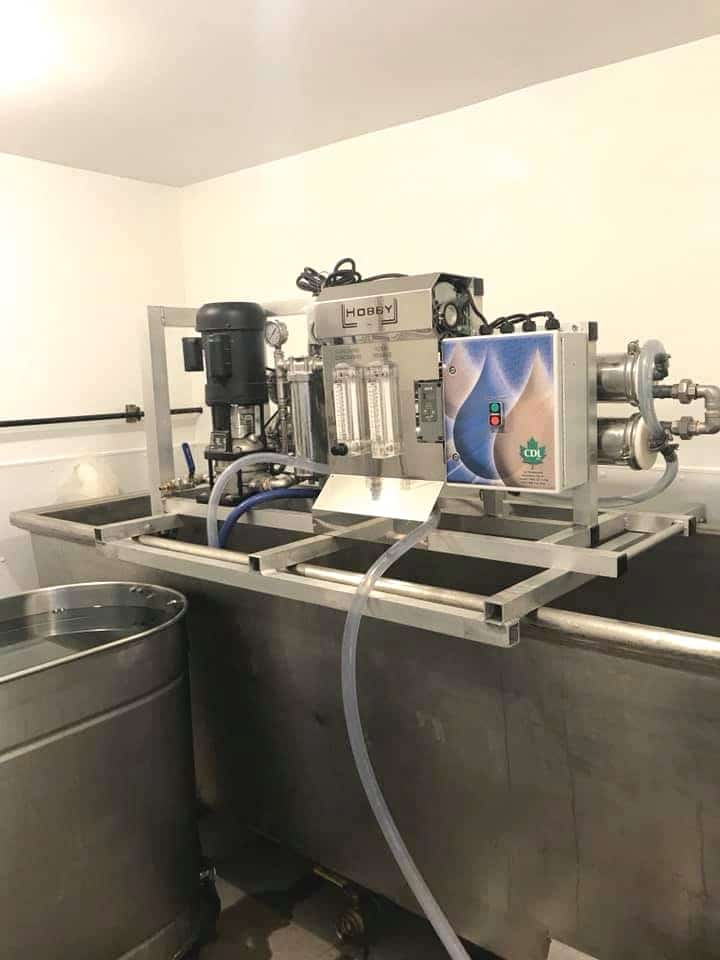
Reverse Osmosis machine
Raw sap, or concentrate, is then boiled down to syrup. Sap becomes syrup 7.1°F above the boiling point of water. We don’t give an exact temperature across the board, because this temperature changes throughout the course of the day, based on weather and atmospheric pressure. Syrup must have a sugar content of at least 66 Brix. A hydrometer is used to test the Brix (sugar content) of the syrup. Once it is determined to have the correct Brix, it’s filtered. There are different methods of filtering syrup: gravity filtering and the filter press. This process removes unwanted matter, like niter (a concentration of minerals suspended in the syrup),from the syrup and improves its clarity.
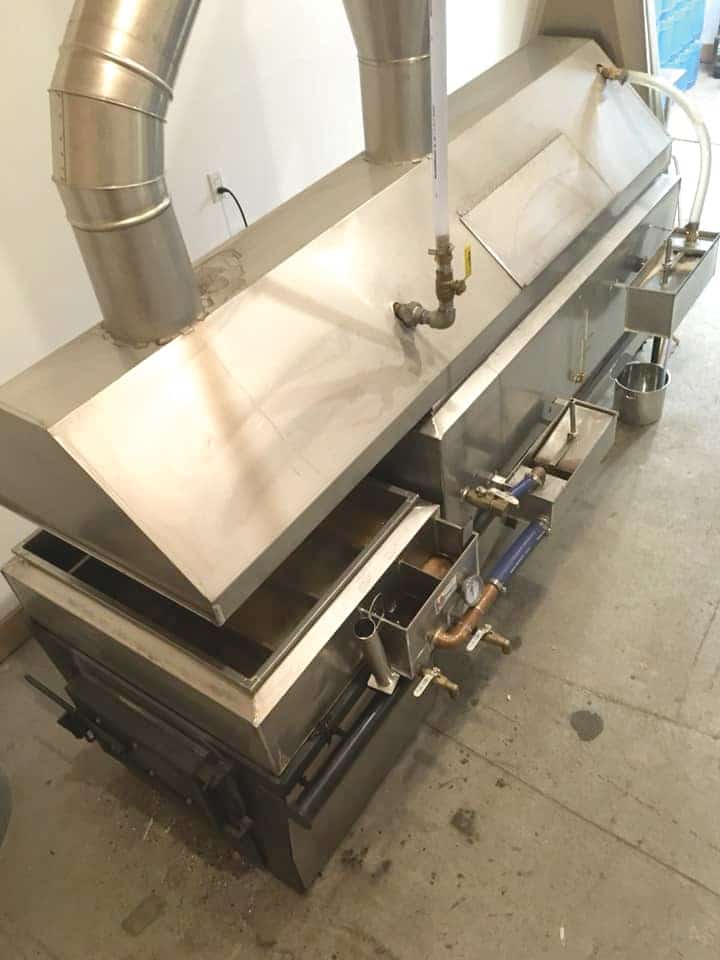
Maple evaporator
All syrup must be graded. The grade depends on how much light is transmitted through it. The USDA came up with a standardized color system to assist producers. This system is then supported by a second system of assessing the quality of each batch by flavor. There are five grades in which syrup can be given: Grade A Golden (Delicate Flavor), Grade A Amber (Rich Flavor), Grade A Dark (Robust Flavor), Grade A Very Dark (Strong Flavor), and Processing Grade. Processing Grade is bought and used by other food manufactures as a maple flavor additive. Once the proper grade is determined the syrup can be bottled, and purchased for consumption!
That is such an intensive process! Have you been learning a lot along the way?
Yes! In 2019, I attended Maple Camp through Cornell’s Maple Program at the Arnot Research Center in Van Etten, New York. The Cornell Sugar Maple Program exists to improve the production and use of maple products by working with producers, consumers and others interested in maple. There is still a lot we do not know about maple, and it is their job to research it! The camp was very informative, with input from people of all different backgrounds relating to maple. One of my favorite things I took away from this camp was the chemistry of sap, how we manipulate it when we process it, and most notably the health benefits of it.
I won’t bore you with the chemistry, but the health benefits of Maple are astounding, especially compared with other conventional sweeteners. There is not another sweetener that comes close to health benefits of pure maple, which is an excellent source of mineral nutrients and vitamins. Right out of the tree, it naturally contains manganese, riboflavin, zinc, magnesium, calcium and potassium. My biggest question is: Why aren’t we using it more? As the technology we use to produce maple syrup improves and is studied more, I believe maple will be the sweetener of the future, as it is literally an untapped resource right now. I believe maple producers share the goal to “put maple on the map”. There really has never been an advertising campaign on a large scale to show the health benefits of maple versus other sweeteners.
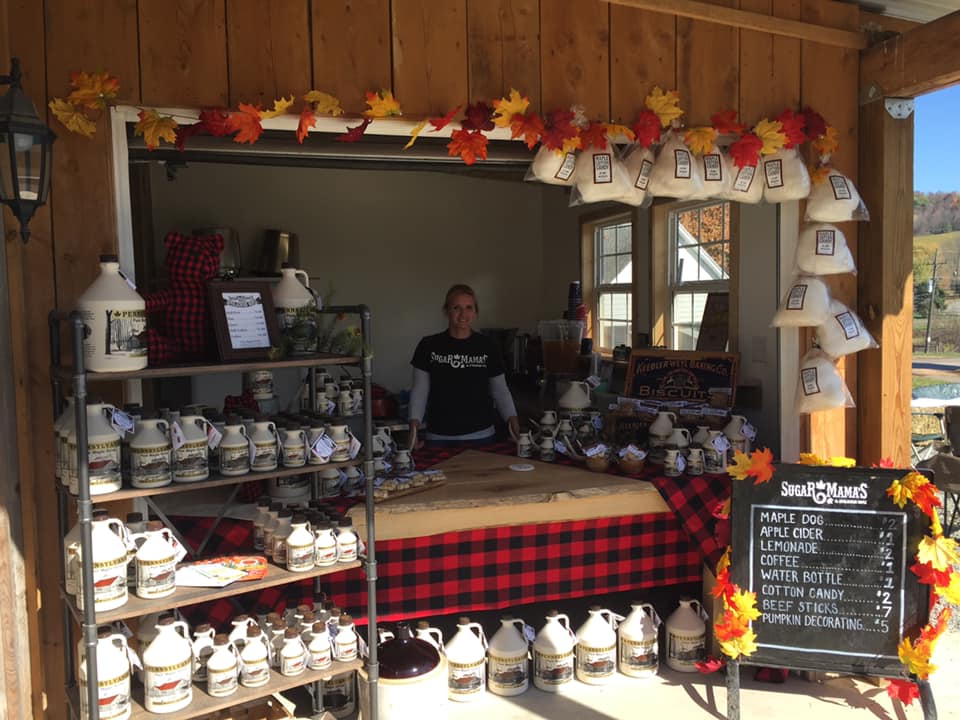
Where can we find Sugar Mama’s maple products in PA?
The Sawhorse Cafe is a coffee bar and brunch restaurant in Williamsport, and it offers a seasonally based menu from locally sourced produce and products. You can find Sugar Mama’s Maple paired with some of the menu options, like nectarine and ricotta waffles. Gayle’s Kitchen Creations, probably best known for Gayle’s Kombucha, is now incorporating Sugar Mama’s Maple into a Sweet ‘n Sour Salad Dressing. The Tria Prima Tea Company is a full-service tea bar serving organic teas and herbs; it offers our maple to accompany your favorite cup of tea, as well as yummy baked goods! And Bullfrog Brewery, an award-winning, independent craft microbrewery in downtown Williamsport, created a Brown Ale using Sugar Mama’s sap and syrup. Its brewpub also serve Sugar Mama’s Maple with some of the food menu items.
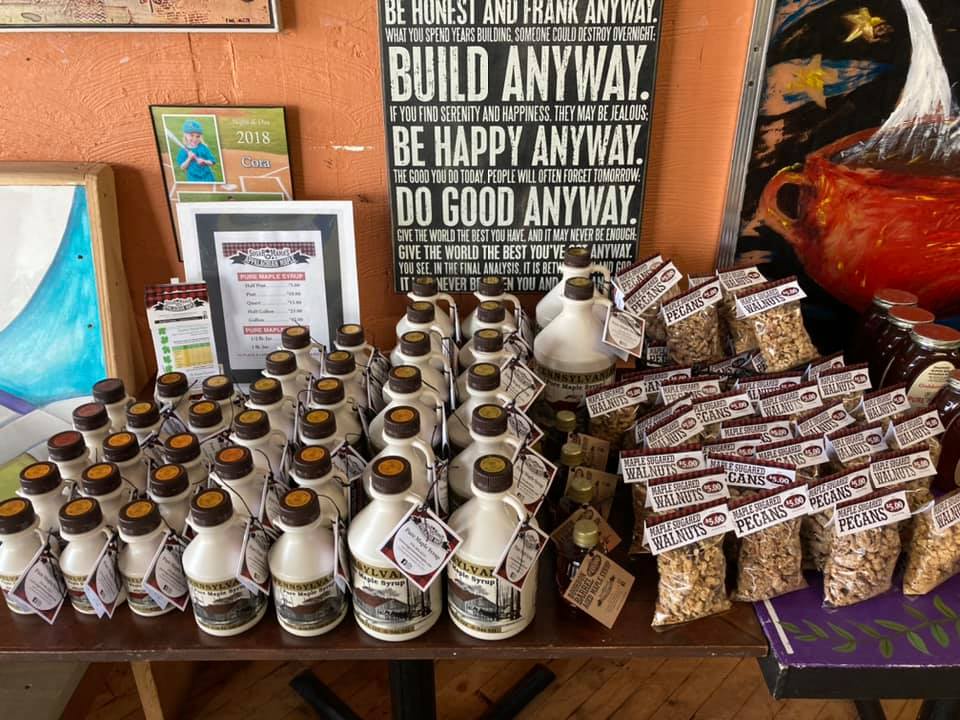
We started participating in First Friday and First Saturday in downtown Williamsport. These two events have been inspiring us to continue what we do at Sugar Mama’s. Many people don’t know how their food is grown, harvested or made. We have the unique opportunity to educate them and directly sell them our product. Another interesting conversation I’ve been having with curious passers-by is about why I have White Tail Deer sheds displayed with my syrup. Many of them who have lived here all their lives don’t know White Tail Buck lose them every spring after the rut, and then regrow a new set by fall. This happens during the same time I’m in the woods tapping the maple trees, so I find them laying around. My job as a maple producer incorporates different fields of science, and biology is one of them! I just love sharing and teaching the knowledge that has been passed down to me.
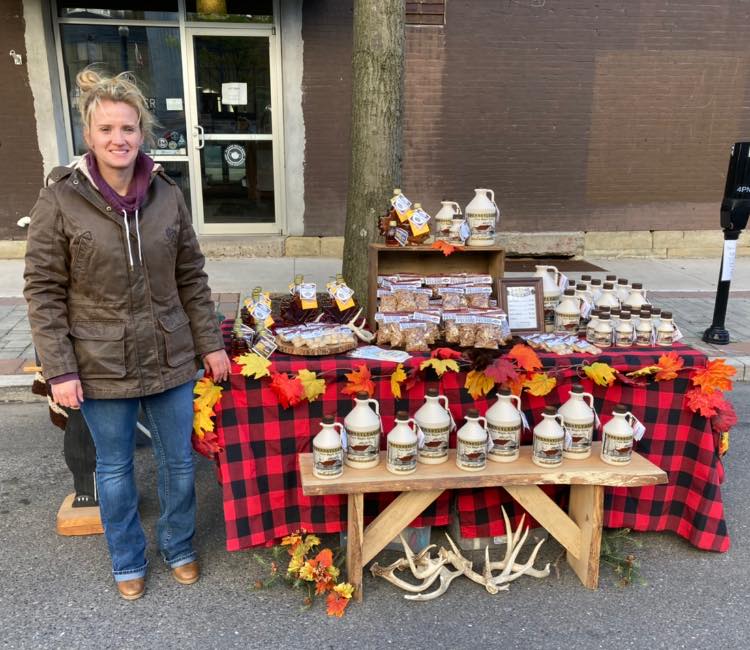
Rachel Courtney at First Saturday in Williamsport, PA
Courtney is a part of the Potter-Tioga Maple Producers Association, where you can check out her profile and look for fun, PA-maple-centric events. You can find information about Sugar Mama’s Appalachian Maple’s open house by following along on Facebook and Instagram.
Sugar Mama’s Appalachian Maple is located at 1528 Route 660 in Mansfield, PA; phone: (570) 494-8333.
- Photos: Sugar Mama's Appalachian Maple
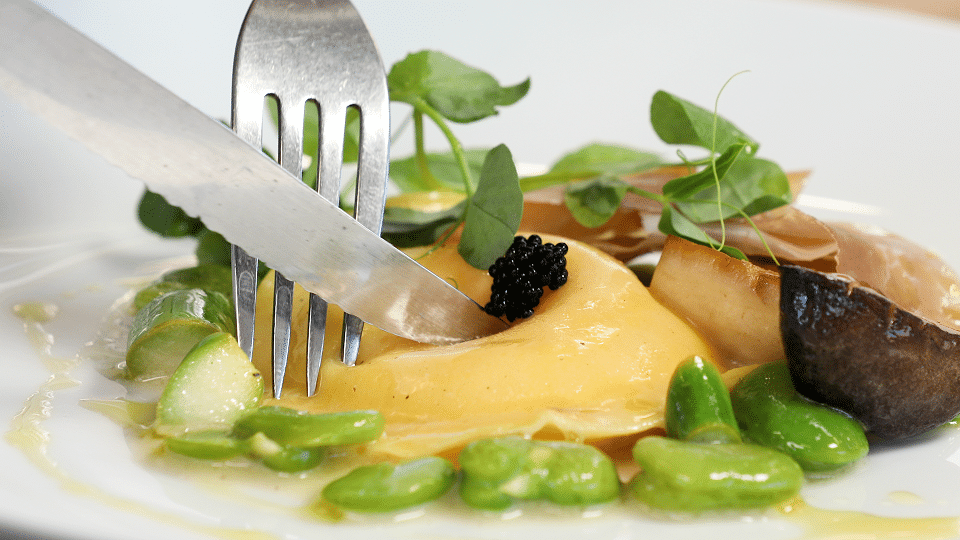
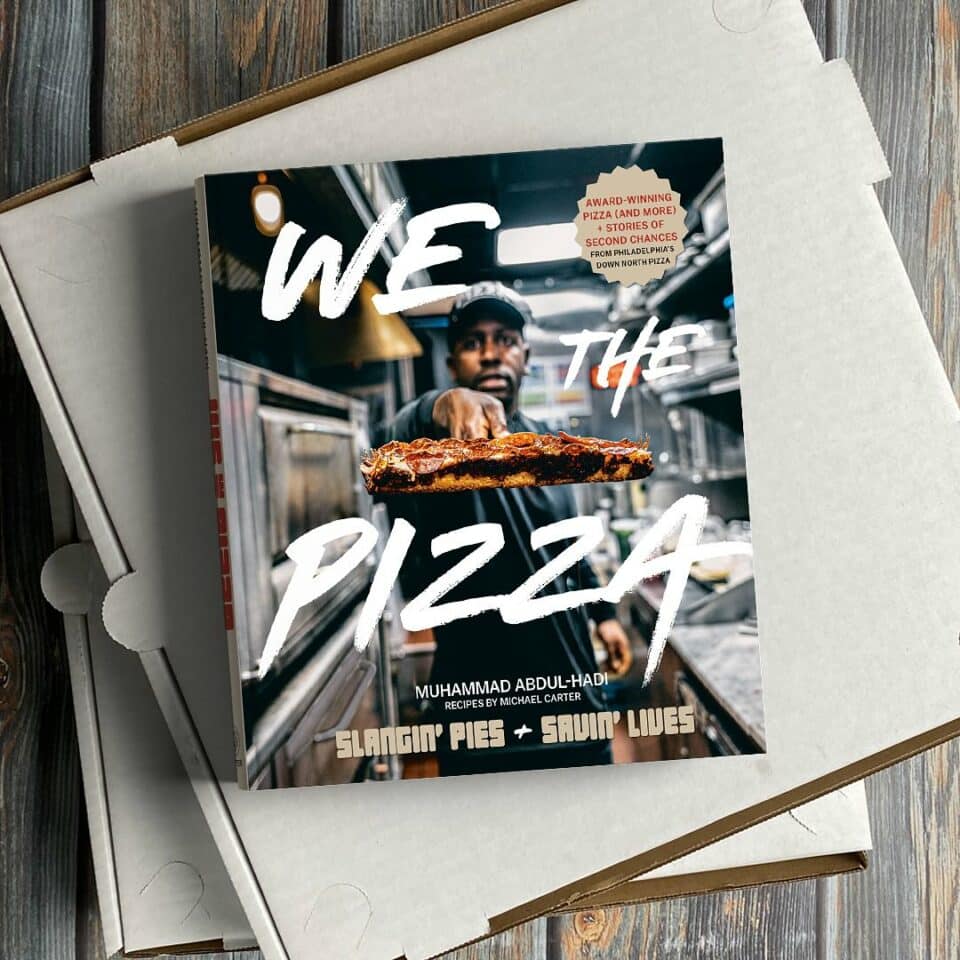
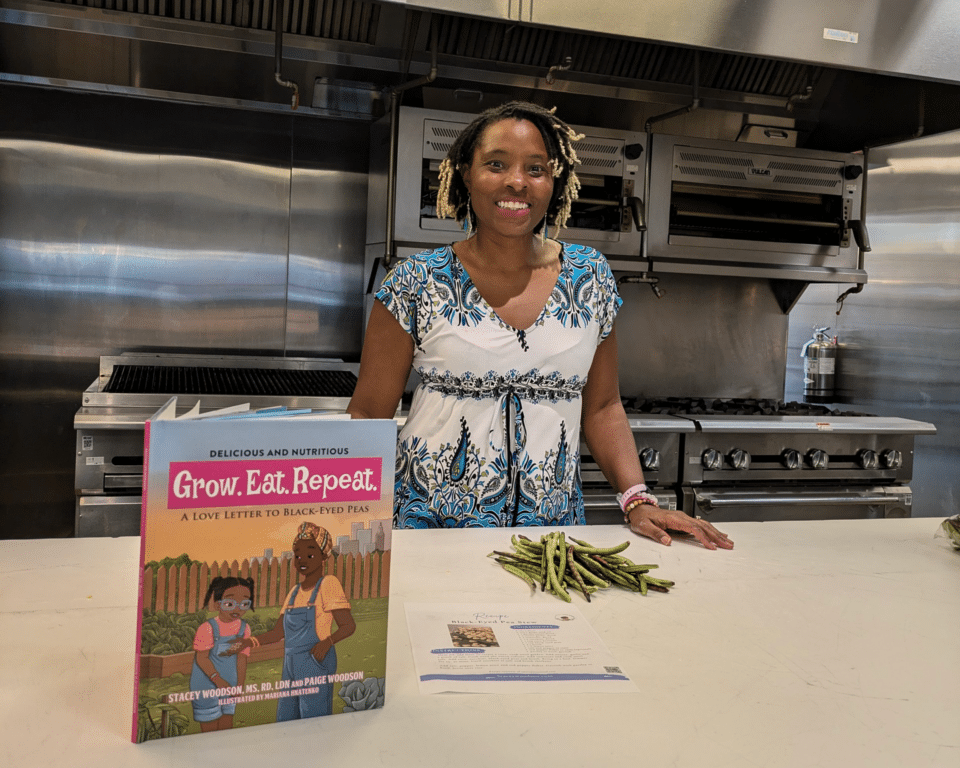
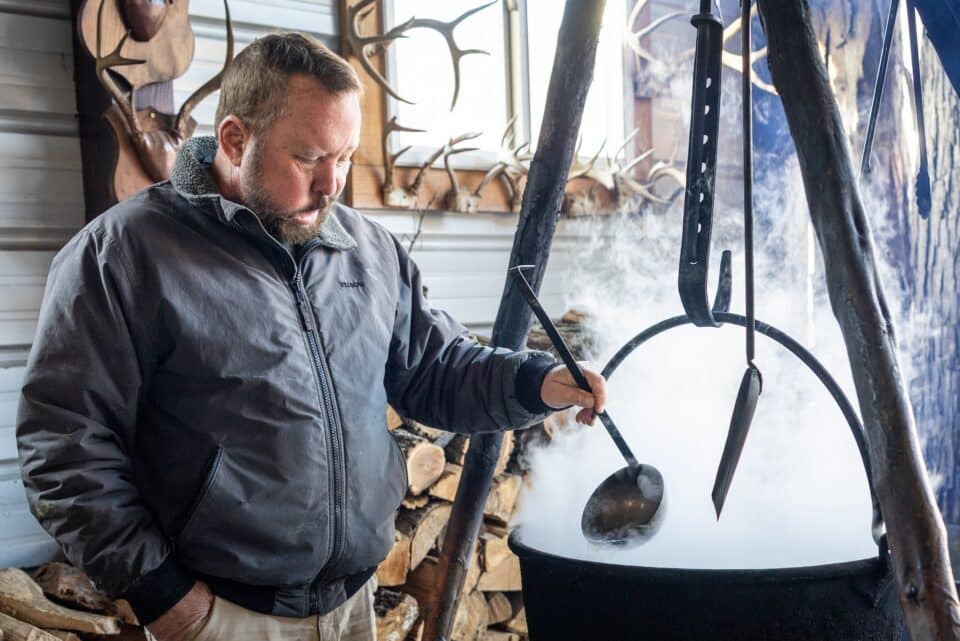

3 Comments